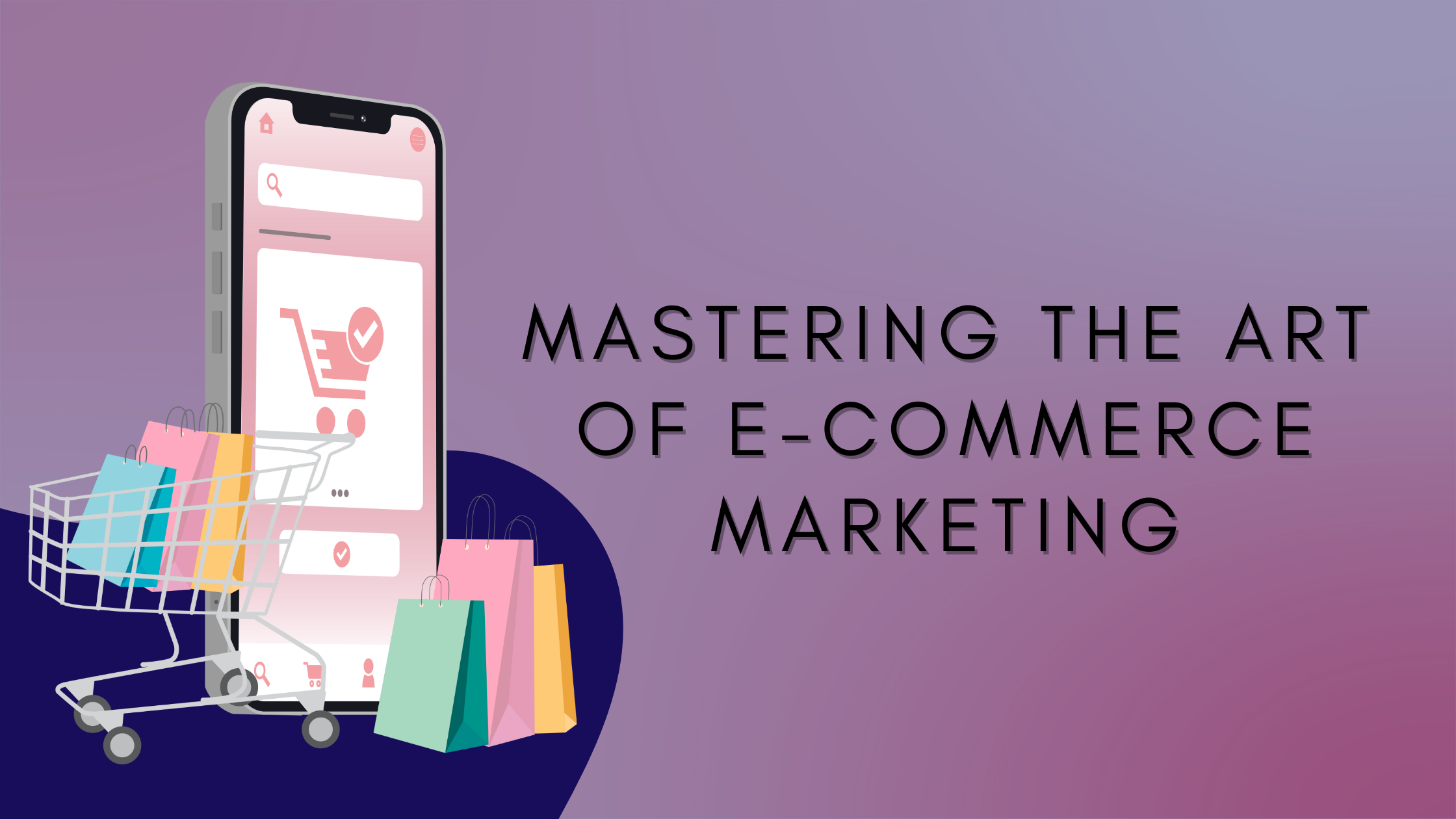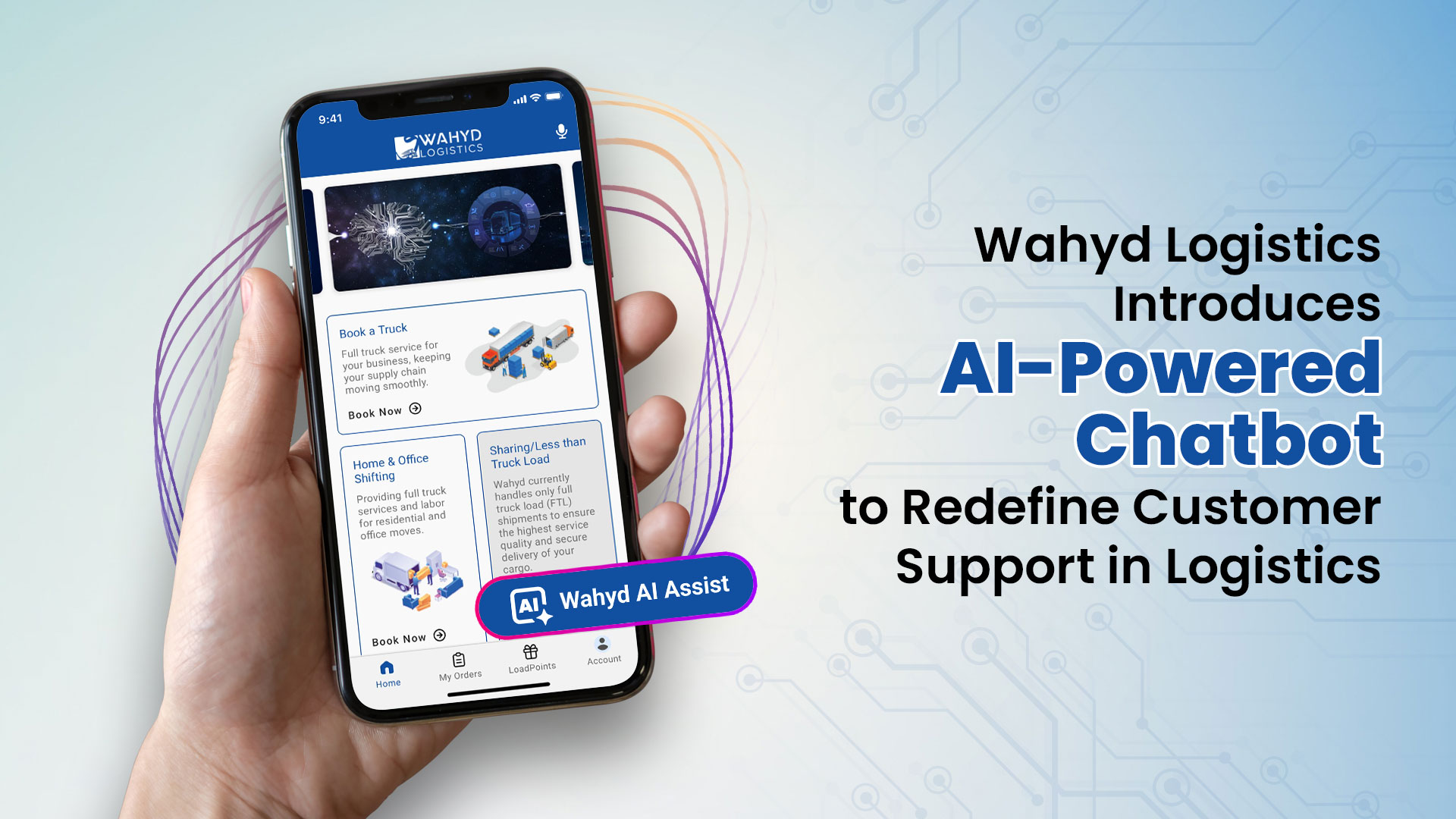
In today’s digital landscape, e-commerce has become an essential part of any business strategy. However, simply having an online presence is not enough to succeed in the competitive world of online retail. To truly thrive and stand out from the crowd, businesses need to master the art of e-commerce marketing. In this blog post, we will explore various strategies that can help you optimize your marketing efforts and stay ahead of the curve in the ever-evolving world of e-commerce. Whether you are a seasoned marketer or just starting out, these insights will provide valuable guidance on how to drive traffic, boost conversions, and achieve sustainable growth for your online store.
1. Understanding E-commerce Marketing
Effective marketing strategies are vital for success in the world of e-commerce. To engage and convert customers, businesses must focus on creating compelling content that resonates with their target audience. Utilizing email campaigns as part of a comprehensive marketing strategy can help drive traffic to your online store and increase sales.
2. Understanding E-commerce Marketing: In the fast-paced realm of e-commerce, it is crucial to employ effective marketing strategies that capture consumers’ attention and encourage them to make purchases. Crafting high-quality content that speaks directly to your target market’s needs and desires is paramount for driving conversions. Leveraging email campaigns as a key component within your overall marketing strategy can effectively reach potential customers and enhance brand visibility.
1.1 The Basics of E-commerce Marketing
1.1 The Basics of E-commerce Marketing
Creating high-quality content tailored to your customers’ needs and preferences is a crucial strategy for e-commerce marketing success.
To succeed in e-commerce marketing, it is crucial to develop effective strategies that reach and engage your target audience. One key strategy is creating high-quality content tailored to your customers’ needs and preferences. Another valuable tactic is utilizing email marketing, leveraging personalized messages and promotions to drive conversions. By implementing these strategies, you can maximize the potential of your e-commerce business and stand out in a competitive online marketplace.
1.2 Key E-commerce Marketing Channels
1.2 Key E-commerce Marketing Channels
One of the key marketing strategies for e-commerce businesses is leveraging content to engage with customers. By creating high-quality and valuable content, such as blog posts or videos, businesses can attract and retain their target audience, ultimately driving sales.
Email marketing remains a crucial channel for e-commerce businesses to reach their customers directly. Through personalized and targeted email campaigns, businesses can nurture customer relationships, promote new products or offers, and drive repeat purchases. It’s important to ensure that email campaigns are well-designed and optimized for mobile devices to maximize effectiveness.
1.3 Consumer Behavior in E-commerce
In the ever-evolving world of e-commerce, understanding consumer behavior is crucial for effective marketing strategies. Consumer preferences and buying habits have undergone significant changes in recent years, driven by advancements in technology and shifts in online shopping trends. To stay ahead of the competition, businesses must adapt their content and email marketing approaches to capture consumers’ attention and deliver personalized experiences that resonate with their needs. By leveraging data analytics and employing targeted marketing techniques, companies can tailor their strategies to suit individual consumer behaviors, maximizing conversion rates and driving business growth.
2. Developing an E-commerce Marketing Strategy
:
Setting clear goals and objectives is crucial for the success of any e-commerce marketing strategy. By clearly defining what you want to achieve, you can focus your efforts and measure your progress effectively.
Identifying your target audience is a fundamental step in developing an e-commerce marketing strategy. Understanding their needs, preferences, and demographics will enable you to tailor your messaging and offerings specifically for them, increasing the chances of conversion.
2.1 Setting Clear Goals and Objectives
Defining Key Performance Indicators (KPIs) is crucial in setting clear goals and objectives for your e-commerce marketing strategy. These KPIs provide measurable benchmarks that allow you to track the success of your efforts and make data-driven decisions. By establishing specific, attainable targets, you can ensure that your marketing goals align with the overall objectives of your business. This alignment ensures a cohesive approach that maximizes the impact of your marketing strategies on driving sales and increasing brand visibility.
2.2 Identifying Target Audience
Conducting market research is crucial in identifying your target audience for effective e-commerce marketing. By analyzing industry trends, consumer behavior, and competitor strategies, you can gain valuable insights into the preferences and needs of your potential customers.
Creating buyer personas helps further refine your understanding of the target audience. These fictional representations of your ideal customers consider demographics such as age, gender, location, as well as psychographics like interests and values. By developing these personas based on thorough research, you can tailor your marketing strategies to resonate with specific segments within your target audience.
2.3 Creating an Effective Branding Strategy
Developing a unique value proposition is essential in creating an effective branding strategy. It helps differentiate your e-commerce business from competitors and communicates the value you provide to customers. Designing a memorable brand identity further enhances your brand’s recognition and recall among consumers. Craft consistent messaging across all platforms to ensure that your brand voice remains cohesive, reinforcing your key messages consistently.
- Identify what sets your e-commerce business apart from competitors
- Create a visually appealing and recognizable brand identity
- Establish clear messaging guidelines for all marketing channels
2.4 Implementing SEO for E-commerce
Conducting thorough keyword research is crucial for identifying high-value search terms that can drive organic traffic to your e-commerce website. By understanding the keywords that your target audience is using, you can optimize your on-page elements such as meta tags, headings, and content to improve visibility in search engine results. Additionally, building quality backlinks from reputable sources will further enhance your site’s authority and help boost its organic rankings.
2.5 Leveraging Social Media Marketing
Choosing the right social media channels for your target audience is crucial in maximizing your marketing efforts. Research and analyze which platforms are most popular among your target demographic, then focus on creating engaging content specifically tailored to those platforms. Additionally, pay attention to analytics and adjust your strategies accordingly. By analyzing metrics such as engagement rates and conversion rates, you can fine-tune your approach and ensure that you are effectively reaching and resonating with your followers.
2.6 Utilizing Email Marketing
Email marketing is a powerful tool for e-commerce businesses to engage with their customers directly. By creating personalized and targeted email campaigns, businesses can build strong relationships and encourage repeat purchases. Utilize compelling subject lines, concise content, and strategic call-to-actions to maximize the effectiveness of your email marketing efforts.
In addition to customer retention, email marketing also serves as an effective channel for driving sales and promoting new products or services. Use eye-catching visuals, exclusive discounts or promotions, and clear product descriptions to capture your audience’s attention in their inbox. Remember to optimize your emails for mobile devices since more people are accessing emails on smartphones and tablets than ever before.
2.7 Incorporating Influencer Marketing
Influencer marketing has become a powerful tool in the world of e-commerce. By partnering with influential individuals who have a loyal following, businesses can reach their target audience more effectively and build credibility for their brand.
When incorporating influencer marketing into your e-commerce strategy, it’s important to choose influencers whose values align with your brand and whose followers are likely to be interested in your products or services. Additionally, creating authentic and engaging content that resonates with both the influencer and their audience will help maximize the impact of this marketing approach.
2.8 Integrating Content Marketing
Integrating content marketing into your e-commerce strategy is crucial for attracting and engaging customers. By creating high-quality, informative content, you can establish your brand as an authority in the industry and build trust with your audience. Here are some key ways to integrate content marketing into your e-commerce strategy:
- Create a blog or resource center on your website to provide valuable information related to your products or industry.
- Develop engaging product descriptions that highlight the benefits and features of each item.
- Use storytelling techniques in your content to connect with customers on an emotional level.
- Incorporate user-generated content such as customer reviews and testimonials to showcase social proof.
By seamlessly integrating these content marketing strategies into your overall e-commerce approach, you can enhance brand visibility, boost customer engagement, and ultimately drive more sales.
3. Measuring and Analyzing E-commerce Marketing Efforts
Tracking Key Performance Indicators (KPIs) is crucial for measuring the success of your e-commerce marketing efforts. By identifying and monitoring relevant KPIs such as conversion rate, customer acquisition cost, and average order value, you can gain valuable insights into the effectiveness of your strategies.
Analyzing website traffic is another essential aspect of measuring e-commerce marketing efforts. By examining metrics like page views, bounce rate, and time on site, you can understand how visitors interact with your website and identify areas for improvement to optimize user experience and increase conversions.
3.1 Tracking Key Performance Indicators (KPIs)
Tracking Key Performance Indicators (KPIs) is essential for measuring the success of your e-commerce marketing strategies. By regularly monitoring KPIs such as sales revenue, conversion rates, and customer acquisition costs, you can gain valuable insights into the effectiveness of your campaigns and make data-driven decisions to optimize performance.
Analyze website traffic by monitoring metrics like page views, unique visitors, and bounce rates. This will help you identify popular content and areas for improvement on your site. Additionally, evaluating conversion rates allows you to assess the percentage of visitors who complete desired actions such as making a purchase or filling out a form. Keep track of customer engagement metrics like click-through rates and time spent on site to gauge how effectively you’re capturing audience attention. Finally, utilize A/B testing to compare different variations of elements like headlines or call-to-action buttons in order to determine which ones yield higher conversions.
End
3.2 Analyzing Website Traffic
To effectively analyze website traffic, it is essential to track and measure key performance indicators (KPIs) such as page views, bounce rate, and average session duration. These metrics provide valuable insights into the effectiveness of your marketing strategies and help identify areas for improvement.
In addition to tracking KPIs, analyzing website traffic involves examining user behavior through tools like Google Analytics. By studying visitor demographics, referral sources, and popular landing pages, you can gain a deeper understanding of your target audience’s preferences and tailor your marketing efforts accordingly.
3.3 Evaluating Conversion Rates
To evaluate conversion rates effectively, it is crucial to analyze the entire customer journey from landing on the website to making a purchase. By tracking and measuring each step of the process, businesses can identify any bottlenecks or areas for improvement. Additionally, segmenting customers based on their behavior can provide valuable insights into which marketing strategies are most effective in driving conversions.
Furthermore, conducting A/B testing allows businesses to compare different versions of webpages or promotional materials to determine which ones lead to higher conversion rates. This data-driven approach enables companies to make informed decisions and optimize their marketing efforts for better results.
3.4 Monitoring Customer Engagement
To effectively monitor customer engagement, utilize social media analytics tools to track interactions and measure sentiment towards your brand. Regularly assess customer feedback and reviews to gain insights into their satisfaction levels and identify areas for improvement.
Implement a system for tracking email open rates, click-through rates, and unsubscribe rates to evaluate the effectiveness of your email marketing campaigns. This data will help you refine your messaging and targeting strategies to better engage with customers.
3.5 Utilizing A/B Testing
Utilizing A/B testing is a crucial strategy in e-commerce marketing that allows businesses to optimize their website and improve conversion rates. By creating two versions of a webpage or campaign, you can test different elements and determine which one performs better. This data-driven approach enables you to make informed decisions and implement changes that will drive higher engagement and sales.
When conducting A/B testing, consider the following:
- Test one variable at a time to accurately measure its impact
- Ensure your sample size is statistically significant for reliable results
- Monitor key metrics such as click-through rates, bounce rates, and time spent on page
- Continuously analyze the data collected to refine your strategies
4. Optimizing E-commerce Marketing Strategies
4.1 Personalization and Customer Segmentation: Tailoring your marketing efforts to individual customers based on their preferences and behavior can significantly improve conversion rates. By utilizing data analytics and customer segmentation techniques, you can create personalized experiences that resonate with your target audience, increasing engagement and driving sales.
4.2 Implementing Retargeting: Don’t let potential customers slip away! Retargeting allows you to reach out to users who have shown interest in your products or visited your website but didn’t make a purchase. By displaying targeted ads across various platforms, you can remind them of what they’re missing out on and encourage them to come back and complete their purchase.
End of text
4.1 Personalization and Customer Segmentation
Utilizing customer data for targeted marketing campaigns allows e-commerce businesses to effectively reach their desired audience. By analyzing customer behavior and demographics, businesses can tailor their messaging and promotions to resonate with specific segments of their customer base. This personalized approach increases the chances of conversion and builds stronger relationships with customers.
Creating personalized product recommendations is another effective strategy for e-commerce marketing. By leveraging data on previous purchases, browsing history, and preferences, businesses can suggest products that are highly relevant to each individual customer. This not only improves the shopping experience but also increases the likelihood of cross-selling or upselling.
Segmenting customers based on demographics and behavior helps e-commerce businesses better understand their target audience. By grouping customers into different segments, such as age groups or purchasing habits, businesses can create targeted marketing campaigns that address the specific needs and interests of each segment. This segmentation enables more efficient allocation of resources by focusing efforts on high-potential customers.
In summary:
- Utilize customer data for targeted marketing campaigns
- Create personalized product recommendations
- Segment customers based on demographics and behavior
4.2 Implementing Retargeting
Tracking website visitors to display relevant ads is a crucial aspect of implementing retargeting. By using tracking pixels and cookies, you can gather data about your website visitors’ browsing behavior. This information allows you to create personalized advertisements that align with their interests and preferences, increasing the likelihood of conversion.
Sending personalized emails to abandoned cart users is another effective retargeting strategy. By utilizing email automation tools, you can automatically send tailored messages reminding customers about their abandoned carts and offering incentives for them to complete their purchase. This targeted approach helps reignite interest and encourages customers to return to your e-commerce site.
Using dynamic retargeting ads across various platforms is essential for reaching your target audience wherever they may be online. With the help of programmatic advertising platforms, you can serve customized ads based on previous customer interactions or specific product views. This dynamic approach maximizes the chances of reconnecting with potential buyers and driving conversions across different channels like social media, search engines, or websites within ad networks.
4.3 Enhancing User Experience
Optimizing website navigation is crucial for easy browsing and improved user experience. By organizing menus, categorizing products, and implementing clear labels, users can easily find what they are looking for, leading to higher engagement and satisfaction.
Implementing fast loading times is essential to enhance user satisfaction. Slow-loading websites can lead to frustration and high bounce rates. By optimizing images, reducing unnecessary elements, and leveraging caching techniques, websites can load quickly, providing a seamless browsing experience.
Providing intuitive search functionalities allows users to quickly find relevant products or information. Implementing features like autocomplete suggestions and filters based on categories or attributes improves the usability of the search function. This ensures that users can easily locate what they need without any hassle or confusion.
4.4 Implementing Mobile Optimization
Designing a mobile-friendly website or app is crucial for optimizing your e-commerce marketing strategies. With the increasing number of users accessing websites and making purchases on their mobile devices, it is essential to create a seamless user experience that adapts to different screen sizes. Implementing responsive design ensures that your website or app looks and functions flawlessly across various devices, enhancing customer satisfaction and driving conversions.
Ensuring a seamless checkout experience on mobile devices is another vital aspect of mobile optimization. Streamlining the checkout process, minimizing steps, and providing easy navigation can significantly reduce cart abandonment rates. By implementing intuitive features such as autofill options and multiple payment methods compatible with smartphones, you can enhance convenience for customers using their mobile devices for online shopping.
4.5 Leveraging User-generated Content
Encouraging customers to leave reviews and ratings can significantly enhance your e-commerce marketing strategy. Positive reviews and high ratings build trust in your brand, attracting new customers and boosting conversion rates. Sharing user-generated images on social media platforms further amplifies the impact of customer testimonials, showcasing authentic experiences with your products or services. Incorporating these testimonials in marketing materials adds credibility, persuading potential customers to make a purchase.
- Encourage customers to leave reviews and ratings
- Share user-generated images on social media platforms
- Incorporate customer testimonials in marketing materials
4.6 Offering Competitive Pricing and Promotions
One of the key strategies for success in e-commerce marketing is offering competitive pricing and promotions. By carefully analyzing market trends and understanding customer preferences, businesses can set their prices at a level that attracts customers while still maintaining profitability. Additionally, implementing promotional campaigns such as discounts, flash sales, or loyalty programs can create a sense of urgency and encourage customers to make a purchase.
To offer competitive pricing and promotions effectively, it’s crucial to conduct regular competitor analysis to stay ahead of industry trends. This includes monitoring competitors’ pricing strategies and identifying opportunities where your business can offer better value to customers. Furthermore, creating targeted promotional campaigns that align with customer needs and wants will help drive traffic to your e-commerce website and increase conversion rates.
5. Staying Up-to-date with E-commerce Marketing Trends
5.1 Embrace voice search and AI technology: Stay ahead of the game by optimizing your e-commerce marketing strategies to include voice search and AI technology. Voice assistants like Alexa and Google Assistant are becoming increasingly popular, so make sure your website is optimized for voice queries. Additionally, leverage AI tools to personalize customer experiences, streamline operations, and improve overall efficiency.
5.2 Adopt a mobile-first approach: With the majority of online purchases now made on mobile devices, it’s crucial to prioritize a mobile-first approach in your e-commerce marketing strategy. Ensure that your website is fully responsive and provides a seamless user experience across all mobile devices. Optimize loading speed, implement intuitive navigation menus, and offer convenient payment options such as digital wallets for quick transactions.
(Note: Only one paragraph was provided as an example)
5.1 Embracing Voice Search and AI Technology
Implementing voice search optimization allows businesses to cater to the growing number of users relying on voice assistants for search queries. By optimizing website content with relevant keywords and phrases, businesses can improve their visibility in voice search results and attract more organic traffic.
Utilizing chatbots for personalized customer interactions enhances the overall user experience by providing instant assistance and addressing customer queries efficiently. With advancements in natural language processing, chatbots can understand and respond accurately to customer inquiries, ultimately improving engagement and driving conversions.
Leveraging machine learning algorithms enables businesses to target their advertising efforts more effectively. By analyzing consumer behavior patterns, machine learning algorithms can identify specific audience segments that are most likely to convert. This targeted approach helps optimize marketing campaigns, increase ROI, and drive business growth.
5.2 Adopting Mobile-first Approach
Designing a responsive and user-friendly mobile website is crucial in adopting a mobile-first approach. This ensures that your customers have a seamless browsing experience on their smartphones or tablets. Additionally, developing a dedicated mobile app can further enhance the shopping experience by offering personalized recommendations and convenient features such as one-click purchasing. Optimizing product pages and the checkout process specifically for mobile devices improves usability and encourages conversions.
Key points:
- Design responsive and user-friendly mobile websites
- Develop dedicated mobile apps for enhanced shopping experiences
- Optimize product pages and checkout process for easy navigation on mobile devices
5.3 Exploring Social Commerce Opportunities
Integrating social media platforms with e-commerce store has become a crucial strategy for boosting sales and increasing customer engagement. By seamlessly connecting the two, businesses can create a seamless shopping experience for their customers, allowing them to browse products and make purchases directly from their favorite social media platforms.
Running influencer marketing campaigns is another effective way to leverage social commerce opportunities. Partnering with influencers who have a strong following on various social media channels allows businesses to reach a wider audience and build trust among potential customers. Influencers can promote products through authentic reviews and recommendations, driving more traffic to e-commerce stores.
Using shoppable posts is an innovative approach that enables direct purchasing from social media platforms. By tagging products in posts or stories on platforms like Instagram or Facebook, businesses can provide customers with an easier path to purchase without leaving the platform. This frictionless shopping experience helps increase conversions and conveniently caters to the ever-growing mobile consumer base.
Incorporating these strategies into your e-commerce marketing plan will help you capitalize on the immense potential of social commerce and drive significant growth for your business.
5.4 Harnessing the Power of Video Marketing
Creating engaging product videos and tutorials is a powerful way to showcase your offerings. By visually demonstrating the value and benefits of your products, you can capture the attention of potential customers and increase their interest in making a purchase. Additionally, leveraging livestreams or webinars allows for real-time interaction with customers, fostering engagement and building trust. Finally, utilizing video ads on platforms like YouTube or Facebook provides an opportunity to reach a wider audience and boost brand visibility.
- Engage customers through captivating product videos
- Demonstrate the value and benefits of your offerings through tutorials
- Interact with customers in real-time through livestreams or webinars
- Increase brand visibility by using video ads on platforms like YouTube or Facebook
5.5 Emphasizing Sustainability and Ethical Practices
Incorporating eco-friendly packaging options is an essential step towards promoting sustainability. By using biodegradable materials and minimizing waste, e-commerce businesses can reduce their environmental impact while also appealing to environmentally-conscious consumers.
Donating a percentage of sales to charitable causes not only helps those in need but also showcases the company’s commitment to ethical practices. This approach allows e-commerce businesses to make a positive social impact and build trust with customers who appreciate brands that give back.
Promoting fair trade practices through partnerships with ethical suppliers ensures that workers receive fair wages and working conditions. By prioritizing responsible sourcing, e-commerce businesses contribute to creating a more equitable global marketplace while building strong relationships with like-minded suppliers.
6. Conclusion
Importance of a comprehensive marketing strategy: A comprehensive marketing strategy is crucial in the competitive world of e-commerce. It enables businesses to effectively reach and engage their target audience, build brand awareness, drive website traffic, and ultimately increase sales. By incorporating various digital marketing channels and tactics such as SEO, social media advertising, email marketing, and content creation, companies can create a strong online presence that sets them apart from their competitors.
Key takeaways for successful e-commerce marketing: To succeed in e-commerce marketing, businesses need to focus on understanding their target audience’s needs and preferences. They should invest in creating high-quality content that provides value to customers while optimizing it for search engines. Utilizing data analytics is also essential for monitoring campaign performance and making data-driven decisions. Lastly, building trust through excellent customer service and personalized experiences can significantly boost customer loyalty.
Future trends and predictions in the e-commerce industry: The future of e-commerce will be shaped by technological advancements such as artificial intelligence (AI), virtual reality (VR), voice commerce (VCommerce), augmented reality (AR), chatbots automation & machine learning algorithms which will enhance the overall shopping experience for consumers. Personalization will continue to play a significant role as customers expect tailored recommendations based on their browsing behavior. Additionally ESG considerations are increasingly important; users want more sustainable options when purchasing products or services online – this trend will only grow stronger moving forward.






